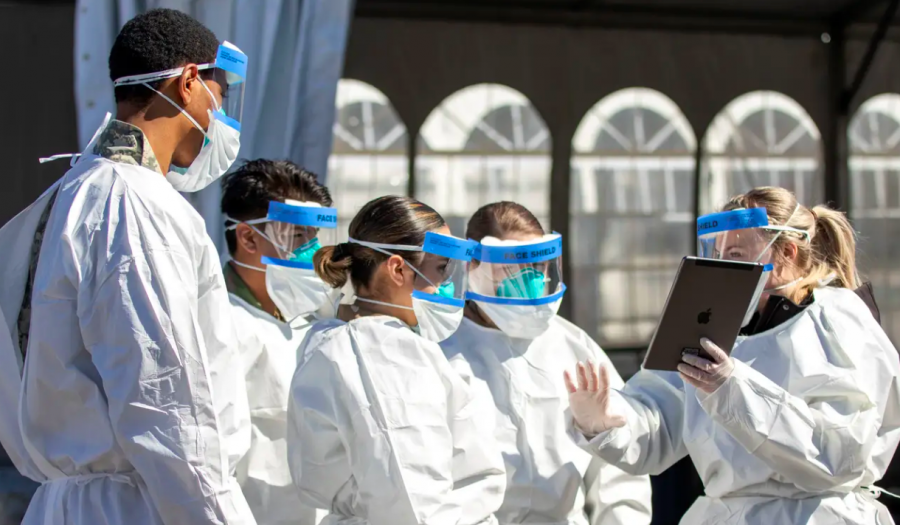Stay Home: A Reality Check from the Emergency Department
March 31, 2020
My uncle is an Emergency Room doctor in a hospital within 25 miles of New York City, the current epicenter of the Covid-19 pandemic. He and his colleagues work on the front lines, helping those exposed to the virus, saving lives, and constantly risking exposure themselves. I had an opportunity to interview him about the current pandemic and how the hospital is handling the situation. We owe many thanks to many people serving the community during this challenging time.
What is happening in general with the virus? Are you getting any helpful information from the government on how to treat it?
There is a constant stream of information from multiple sources: CDC, DOH, WHO, Medical Societies, Social Media (from other physician experiences), and colleagues. I spend as much time as possible reading this material when I’m not working clinically.
What is it like inside a hospital right now?
Our hospital, like many in our area, is at full capacity. All non-emergent operations, procedures, and meetings have been postponed or canceled. Areas and floors have been adjusted to care for more patients, yet there is still not enough room. As I write this, there are currently over 30 [admitted] patients with Covid…boarding in the Emergency Department. That is 30 beds we no longer have to care for new patients coming in. There are many, many new patients coming, and many of them are very sick. We are taking care of them the best we can with the limited space.
Can you speak to testing and how it has changed since the start of the week?
We have tested well over 1,000 people over the past three weeks. Over 600 tested positive and around 250 required admissions to the hospital. At the start of the pandemic, hospitals were not testing every patient with mild symptoms. There were not enough tests, and the results took four to five days. The CDC gave recommendations on who to test. The phones ring all day with questions about testing, and many of them are referred to outpatient testing sites.
Do you have enough safety equipment for the doctors and ventilators for the critical patients?
There is a shortage of supplies everywhere. When we were preparing for this weeks ago, the guidelines called for one mask or shield per patient. That is just not possible. We keep one face shield and N95 mask for the week unless they become soiled. It is psychologically taxing to constantly put on the same mask, hoping that I am not infecting myself. While extremely critical from a safety perspective, the personal protective equipment is very hot and uncomfortable after wearing it for hours.
As for ventilators, there is also a shortage. Our supply was extremely low, but, thankfully, we had a delivery. I suspect we will use all of them as well. More patients are coming in respiratory distress and are being intubated (put on a breathing tube) and placed on ventilators. During this procedure, we have a high risk of exposure. Many of these patients will never come off the ventilator. That is the harsh reality we have to face. Among all the articles and literature I’m reading, there is information about protocols for which patients get the ventilators when there are none left. I pray it never gets to that, but I fear it will.
What approach is the hospital using to manage the virus?
Every employee wears a surgical mask. Visitors are not allowed, no exceptions. This is very difficult. Many sick patients’ families can’t come into the Emergency Department or hospital. Some will never see them again. Many do not understand the risk of exposing themselves and then exposing others in the community. I have had several terrible conversations with family, who are sitting in cars in the parking lot, telling them that their relative may not survive. The hospital has constructed a tent in the parking lot to handle the influx of Covid patients. The tent should be a great step to care for more patients and limit exposure to staff in the Emergency Department.
Do you have advice for people?
Stay home! If you feel bad because you are achy and have a fever, take Tylenol and stay in bed. Isolate yourself. Do not come to the hospital; you can infect others and even yourself if you don’t have the virus. You should only come to the hospital if you are very sick, but make sure to ask your personal doctor for medical advice when needed.
Is there anything the SLS community can do to help?
Our community has really rallied around us. There are deliveries of food, coffee, and gratitude to the hospital multiple times per day. I am not saying you have to do this, but let the hospitals and emergency services in your community know you appreciate what they are doing. It helps lift spirits during an awful day. I don’t just mean the doctors and nurses. There are so many more. The transporters, the housekeeping staff (they are exposed every time they clean a room), the clerks, all of them.




